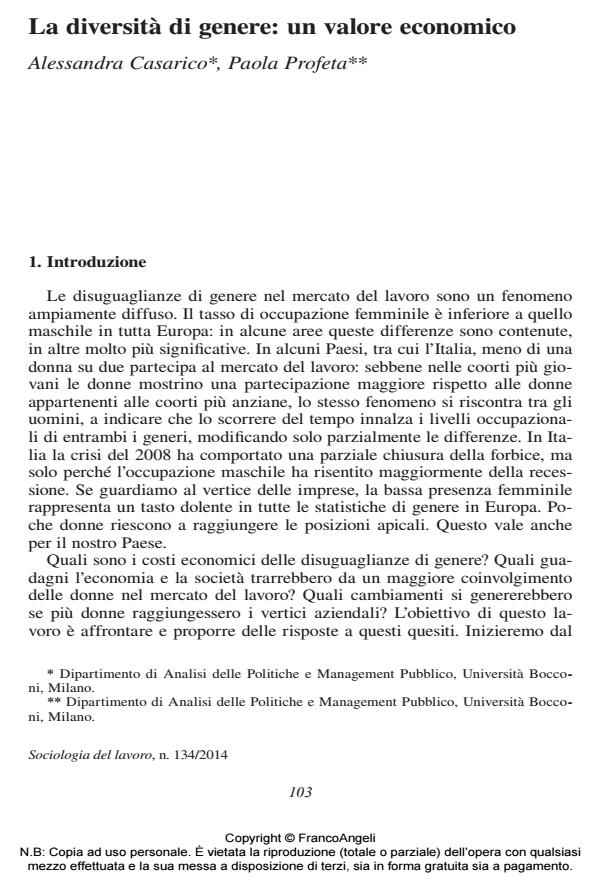Gender diversity as an economic value
Journal title SOCIOLOGIA DEL LAVORO
Author/s Alessandra Casarico, Paola Profeta
Publishing Year 2014 Issue 2014/134
Language Italian Pages 13 P. 103-115 File size 92 KB
DOI 10.3280/SL2014-134006
DOI is like a bar code for intellectual property: to have more infomation
click here
Below, you can see the article first page
If you want to buy this article in PDF format, you can do it, following the instructions to buy download credits

FrancoAngeli is member of Publishers International Linking Association, Inc (PILA), a not-for-profit association which run the CrossRef service enabling links to and from online scholarly content.
What are the economic costs of gender-based disparities? What would the economy and society at large gain from a wider involvement of women in the labour market? What changes would more women in top positions generate? The paper addresses these issues grounding its analysis in the economic literature. It focuses on the policies which can promote the role of women in economic decision making concentrating on gender quotas. In particular, after considering the pros and cons of the introduction of this type of policy, the paper discusses the Italian law introduced in 2011 and its first effects, highlighting how the Italian law can serve as a blueprint for other countries which want to design interventions to promote female presence in leadership positions. The conclusion suggests that viewing equal opportunities between men and women not only as an important matter of equal rights but also a matter of higher growth and welfare for all may help in building consensus to move the issue to the top of the political agenda.
Keywords: Gender gaps, growth, performance, gender quotas, boards of directors
Alessandra Casarico, Paola Profeta, La diversità di genere: un valore economico in "SOCIOLOGIA DEL LAVORO " 134/2014, pp 103-115, DOI: 10.3280/SL2014-134006